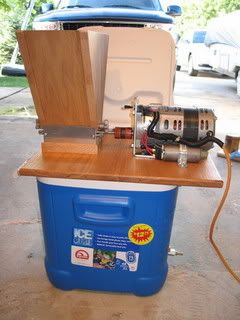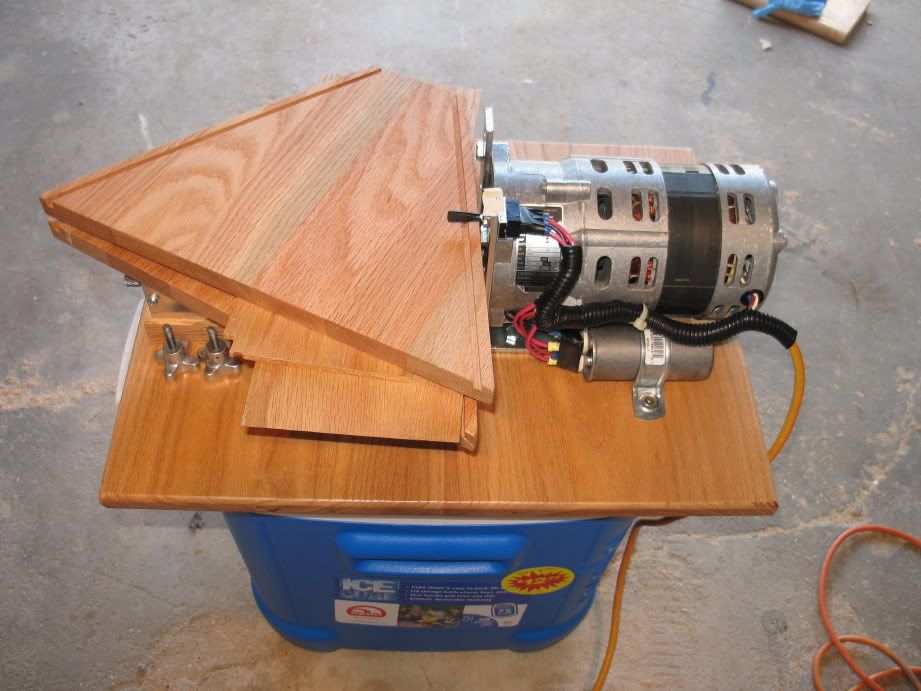Has anyone read the article about malt milling in the new BYO? Very easy to understand and helpful. I just got a mill, happened to be about to crush a batch when I saw it. It breaks down the way 2 roller mills work in simple terms, and I put one of the ideas to work immediately. It pointed out how increasing the velocity of the driven roller, particularly its velocity relative to the undriven roller, means more shearing and less compression, thus a finer grind. When I saw that my mill setting was leaving some uncrushed grains I just sped up the drill and voila, it worked. The next closer setting had been to fine, so that was the only way to get the right crush with my mill. Good timing and very good article.
I’ve been milling at high soeed for just that reason for years. Glad to see it finally getting some publicity.
This confirms my suspicions about my LHBS too. I had always suspected that the mill there was set too close. When I would mill my grain, I would only pull the trigger on the vs drill about halfway-it takes twice as long but it gave a better grind after inspection almost every time. I had two batches that I called ahead and had the owner grind for me and guess what…those were my first two stuck sparges. I brought it up and he said it was fine and that I was draining my tun too fast…but I knew all that flour in my grist was the culprit. Problem now is that he has hard wired the drill, with a fully depressed trigger, to a light switch for convenience. Bummer. I will admit, it does boost the efficiency a point or two but that is worthless to me if i have to spend an hour dicking around with my mlt and sparge.
What is considered high speed? Years ago when I built my mill as I recall the talk was that optimal speed was around 300 to 400RPM.
Mike
[quote=“mbg”]What is considered high speed? Years ago when I built my mill as I recall the talk was that optimal speed was around 300 to 400RPM.
Mike[/quote]
I don’t have any idea what the actual revs were. I’m just talking relatively. Basically, I held my hand under the mill and caught some grain and inspected it. I saw that it was under-crushed, so I increased the revs maybe half again and caught another handful and it looked a lot better. I guess the significant thing to me was that the drill speed is really a finer and more useful means to control the crush than the gap setting. At a guess, based on the 2500 RPM rating on the drill, the increased speed was probably a little more than 400 RPM. It wasn’t quite max revs, but I’d guess that it was more than 16% of max.
I have not read the article yet, but I think it’s safe to say there are risks that can be associated with milling too slow and too fast. I had trouble initially with milling too fast using my standard variable speed drill. I was getting inconsistent crush–including some unmilled grain.
At the recommendation from someone on this forum, I got one of these (it was on sale at the time): http://www.harborfreight.com/1-2-half-i … 93632.html. It’s a beast, but easy to dial in and control the speed.
I should have mentioned that when I motorized my mill many of us bought gear motors at American Science and Surplus (gear reduction motor). These motors could be wired to run in forward and reverse.
Yeah, I’m interested to hear more about this, too, as my FWD/REV motor has good torque but relatively low RPMs, as you mentioned was “en vogue” a few years ago.
Wow - I’ve been trying to figure out why my efficiency has dropped, and I think it could be related to this. My motor is a high torque - low RPM direct drive motor, and although my mill is set at a very fine gap, my efficiency is still suffering.
Weird - I could give the drill milling a shot and see how it shakes out. Thanks!
I’ve used a drill for years and really pleased with the results. I used a zip-tie to set the variable speed at about 1/2 to 3/4 and wired it to a switch.

Here is the old American Science & Surplus reversible gear motor:

…I made a knock-down hopper for easy storage too:

I’m still interested in discussing this a bit further.
I have a (Surplus Center #5-1098) 177.7 RPM 115 VAC GEARMOTOR. It reportedly has about 40 in-lbs of torque. As discussed in the article, is this sufficient for RPMs, or are we talking an optimum range of 400-600?